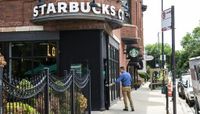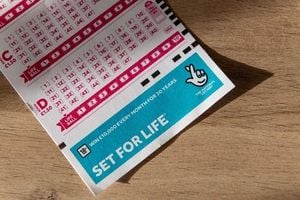Starbucks, the world’s most recognizable coffee chain, is facing a wave of legal challenges from its employees across three states after the company rolled out a new dress code policy in May 2025. Workers in Illinois, Colorado, and California have filed class-action lawsuits and formal complaints, alleging that the company broke state laws by requiring them to purchase new clothing and accessories out of pocket—without reimbursement—to comply with the updated attire requirements. The controversy has become a flashpoint in the ongoing struggle between Starbucks and its workforce, many of whom are already engaged in a high-profile unionization campaign.
The new dress code, which Starbucks announced in April and implemented on May 12, 2025, requires employees across North America to wear a solid black shirt—either short or long-sleeved—under the company’s iconic green apron. The policy also mandates khaki, black, or blue denim bottoms with no patterns or frayed hems, or a solid black dress not more than four inches above the knee. Shoes must be black, gray, dark blue, brown, tan, or white, and made from waterproof material. Socks and hosiery are to be “subdued,” according to Starbucks. The company’s list of prohibited items is long: face tattoos, more than one facial piercing, tongue piercings, theatrical makeup, nail polish, and a range of accessories including feathers, glitter, hoods, and certain types of jewelry are all banned. Employees are also forbidden from wearing aprons during breaks or putting stickers on name tags.
Starbucks told the Associated Press that the changes were designed to “deliver a more consistent experience to customers and give our partners simpler and clearer dress code guidance.” The company refers to its employees as “partners” and said that, as part of the rollout, it provided each worker with two free company-branded shirts. “We’re evolving our dress code in all stores to focus on simplified color options that allow our iconic green apron to shine and create a sense of familiarity for our customers, no matter which store they visit across North America,” Starbucks stated in April. The move is part of CEO Brian Niccol’s “Back to Starbucks” strategy, which aims to revitalize the brand by emphasizing customer connection and a welcoming atmosphere.
But for many workers, the new policy has been more than just a wardrobe update—it’s been a financial burden. Brooke Allen, a full-time student and Starbucks employee in Davis, California, told the Starbucks union’s X account, “I think it’s extremely tone deaf on the company’s part to expect their employees to completely redesign their wardrobe without any compensation. A lot of us are already living paycheck to paycheck.” Allen reported spending more than $150 on new shoes and clothes to meet the dress code’s requirements. “It looks sad now that everyone is wearing black,” she added, reflecting on the loss of self-expression that came with the stricter rules.
Andrew Holland, a plaintiff in Chicago who has worked at Starbucks for over a decade, echoed these concerns. “Starbucks’ new dress code has forced all of us to pay out of pocket for required clothing. We face punishment if we don’t comply, yet the company isn’t covering the costs,” Holland told the Chicago Tribune. “For a corporation making billions, it’s cruel and completely unnecessary for them to force more expenses on employees who are already struggling. My fellow workers and I are taking action so that every worker can be reimbursed, which is barely a fraction of the respect we deserve from a company that cannot exist without us.” Holland said he spent nearly $150 on new shoes alone and noted that Starbucks already has a system for reimbursing employees for business expenses, but requests for dress code reimbursements were denied.
The lawsuits, filed in state courts in Illinois and Colorado, and complaints lodged with California’s Labor and Workforce Development Agency, argue that Starbucks violated state laws requiring employers to reimburse workers for expenses that primarily benefit the company. In Colorado, the law goes further, mandating that employers obtain written consent before imposing such expenses. The plaintiffs are seeking damages for all affected employees, regardless of whether their stores are unionized. If California’s labor agency declines to pursue penalties against Starbucks, workers there intend to file a class-action lawsuit as well.
Starbucks has not commented directly on the lawsuits, but reiterated its commitment to a more uniform customer experience. “As part of this change, and to ensure our partners were prepared, partners received two shirts at no cost,” the company said in a statement. The company also highlighted that worker turnover is at record lows and that more employees are getting the shifts they want, with more recommending Starbucks as a great place to work than ever before.
However, the rollout of the dress code has coincided with ongoing union activity at Starbucks, led by Starbucks Workers United. The union now represents 640 of the company’s 10,000 U.S.-owned stores and has filed hundreds of unfair labor practice charges, including one related to the dress code. Some workers see the stricter policy as a tactic to suppress labor organizing. Holland argued that the new rules “thin down the workforce” without resorting to mass layoffs. “Starbucks wants to get as many people fired and willing to quit as they can,” he said. The union has also pointed to survey results showing that 93% of employees felt the “Back to Starbucks” policy changes had no impact or worsened customer experience, while 88% reported that understaffing resulted in unsustainable work pace or unsafe conditions.
For many employees, the stakes are high. Non-compliance with the dress code can mean not being allowed to start a shift, and repeated violations can lead to corrective action, including termination. Shay Mannik, a barista from Colorado, told Quartz, “If I didn’t [buy new clothes], I’d risk being sent home, written up, or even fired. Starbucks hasn’t reimbursed me for these expenses, and it’s unfair that a billion-dollar company puts this burden on workers already struggling with unpredictable hours and understaffed stores. That’s why I’m standing up for myself and my coworkers so we can all be reimbursed and treated fairly.”
The company’s new policy also comes at a time when it is seeking to reestablish a warmer, more welcoming experience in its stores. Since CEO Niccol took the helm last September, Starbucks has returned to hand-writing names on cups, introduced comfier chairs, and cut back on custom menu items. The dress code, Starbucks says, is just another step in this broader effort.
The legal battle over the dress code is far from over. More than 45 major organizations have sent a letter to CEO Niccol urging the company to finalize fair union contracts, and employees are determined to see their grievances addressed. As the lawsuits proceed, the outcome could set a precedent for how large corporations must handle employee expenses tied to company-mandated policies.
For now, Starbucks workers in Illinois, Colorado, and California are making their voices heard, insisting that a company built on the idea of community and connection should not leave its employees footing the bill for a uniform look.






